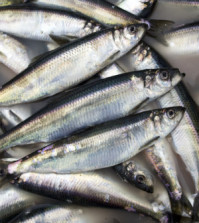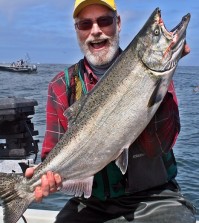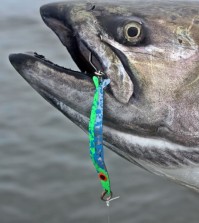A Hundred Ways to Rig Herring

Each week one of the Salmon University experts answers reader questions in our “Ask a Pro” feature. This week’s questions are answered by Tom Nelson. Submit your own question here.
Q: First of all, great web site! I came across it by accident, and I’m very happy I did. Over the years, I’ve fished out on the sound with different people, and it seems to me each one has his own “special” way of rigging cut-plug herring. I’ve recently bought my own boat, and am ready to host my own excursions. Is there a textbook way to rig herring? What do you recommend, slip tie or solid tie hooks? Flasher or no flasher? Thanks – Derrek
A: You are right! There are hundreds of ways to rig herring. They probably all work. The most important thing to remember is to make sure that your herring doesn’t suffer from tail flop. Once you have rigged your herring, put it in the water, give it a pull and watch the action. If the tail is flopping, so that it resembles a prop going through the water, no self respecting salmon is going to touch it. You want your herring to turn in a tight spiral like a drill bit. One thing that will help you get that action is after inserting the hooks slide a toothpick alongside the backbone to hold that bend. If you have tail flop, straighten your herring slightly and re-insert the toothpick. By all means, use solid tie hooks. Slip tie hooks will loose you a lot of fish, as the top hook will slide down and cut off the tail hook. Flashers will catch more fish but are probably less fun to use. If you are trolling herring with a flasher, you should use a plastic herring head holder of one type or another. Fish your herring at least 55 inches behind a flasher. A herring fished by itself will still catch fish, but you lose the sound attraction of a flasher.
Q: When fishing what you call “area 4” inside of Elliot Bay (the mouth of the Duwamish), I wonder if you have any feelings about which tides are optimal to fish. You explain about changing from one side of the Duwamish Head to the other (something I did for years at Possession, before they closed it for Chinook). But what about right at the mouth of a river like the Duwamish? On the one hand, it seems that the high tide might be best because each incoming tide could bring in a rush of new kings. On the other hand, the fish might pile up at the mouth during the lower tides, waiting for the rush of new water to give them a “push” into the river, thereby creating catch opportunities at the low tide. What are your thoughts on the best tides for fishing the mouth of the Duwamish? Regards – Jeremy
A: The answer to your question is yes. You have the concept firmly in mind. I really don’t have a preference for the tides. I have found that for winter blackmouth the incoming tide is better. For summer Chinook, either tide seems to work. The fish will move on the outgoing tide to deeper water. Of course, the best time to fish is an hour before and an hour after tide changes.










